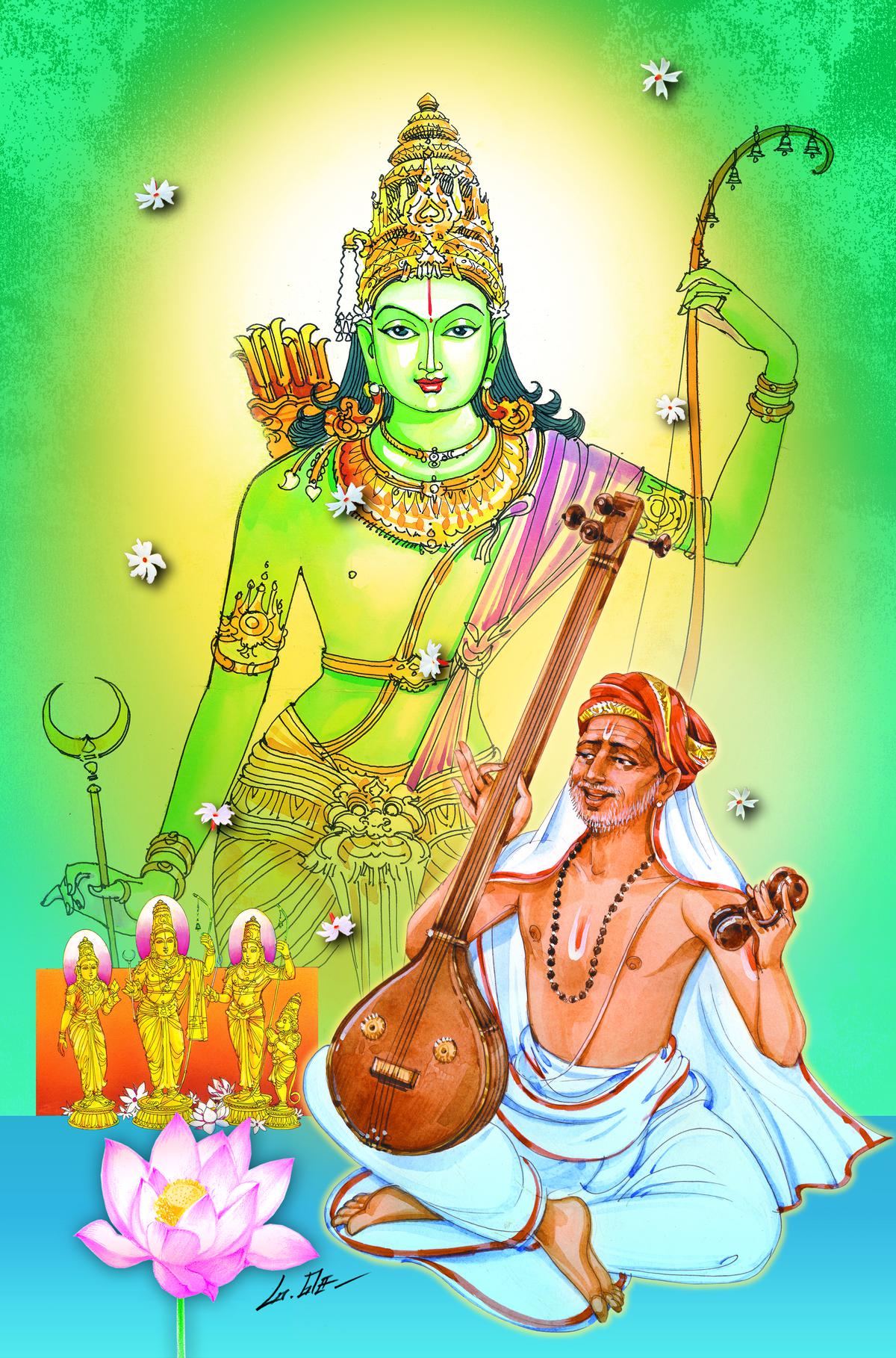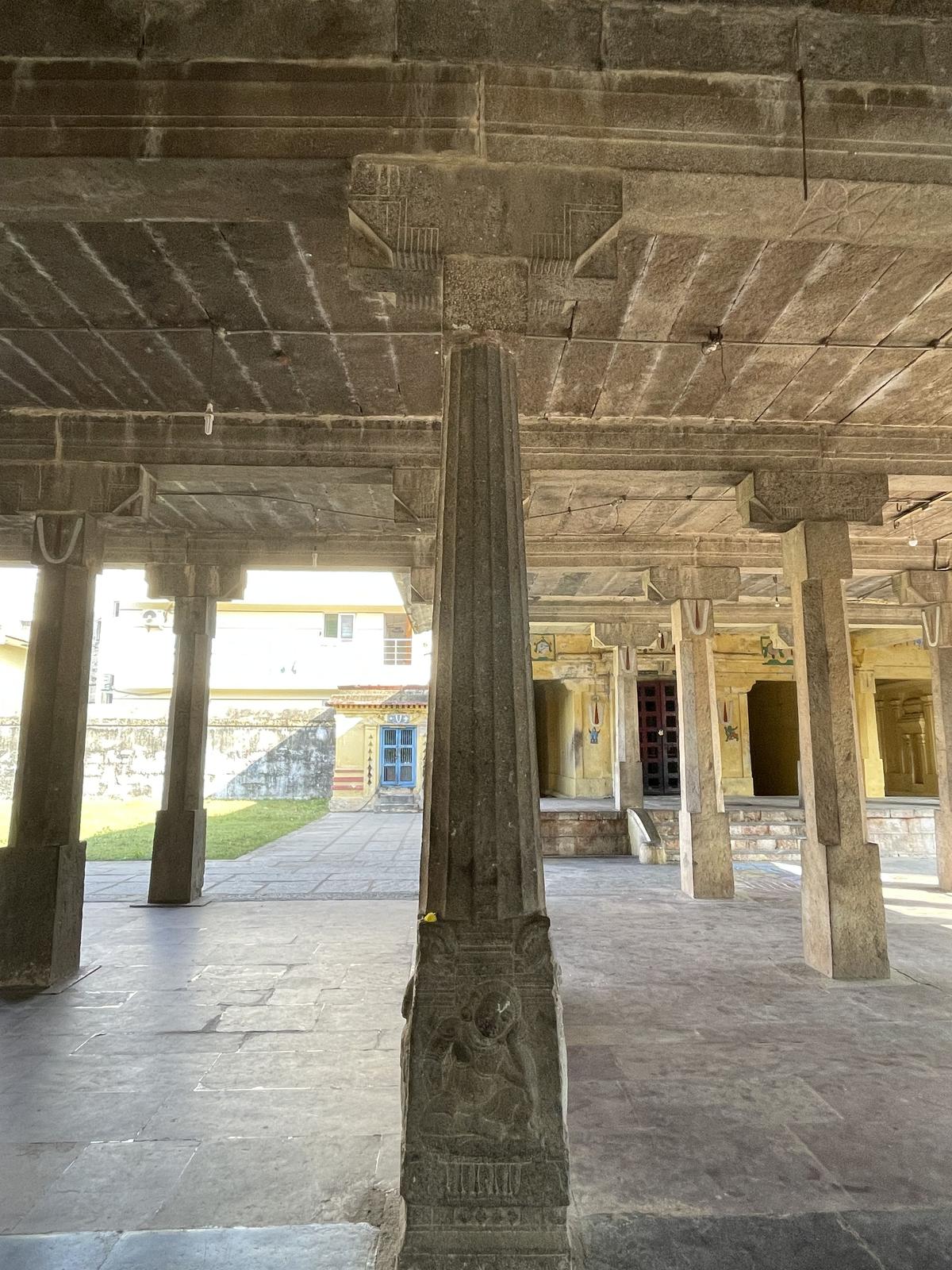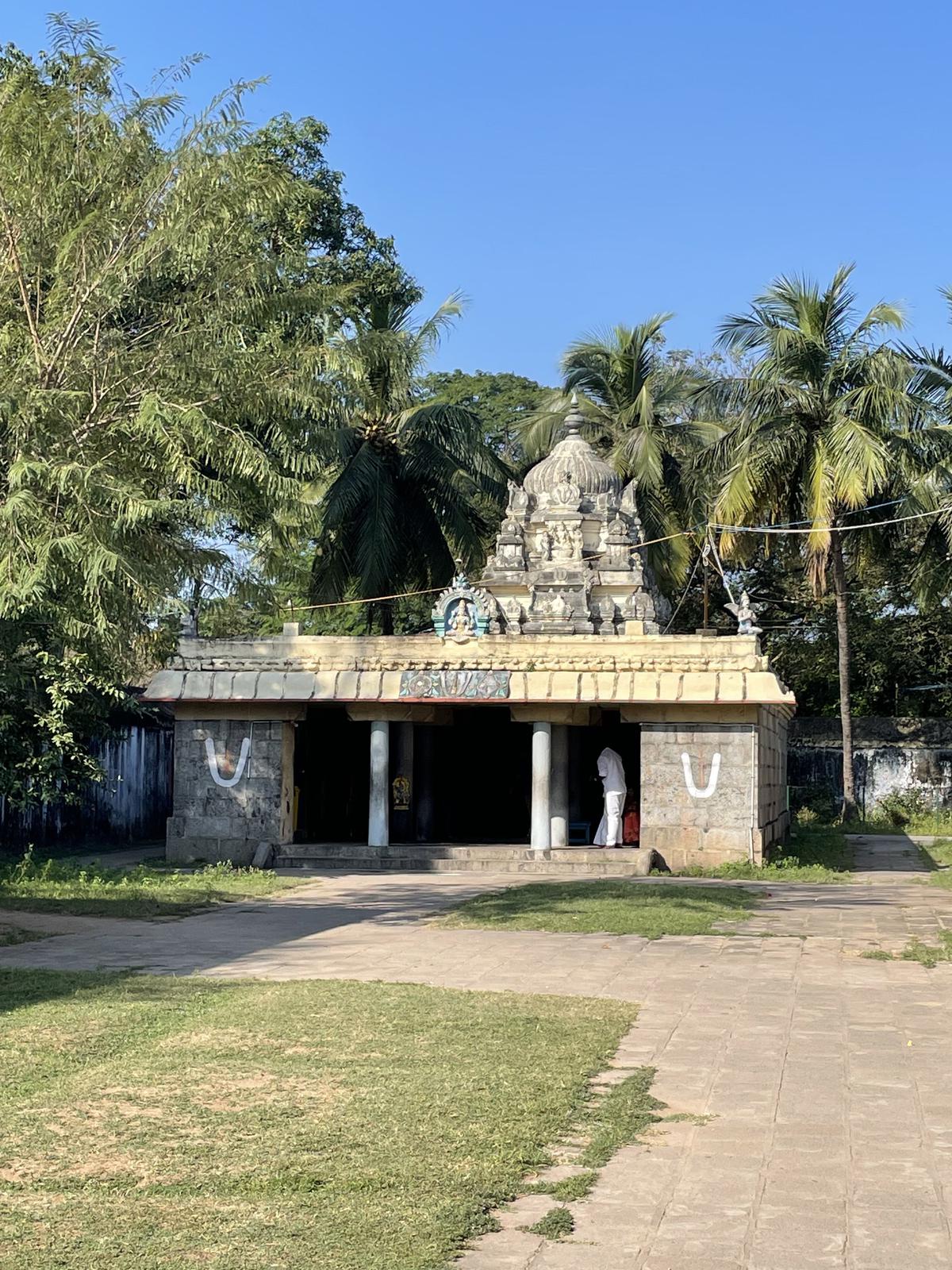Granite slab at Sri Eri Katha Ramar Temple, Madhurantakam, Tamil Nadu with works of Tyagaraja Utsava Sampradaya carved on it. , Photo Credit: KV Srinivasan
The Eri Katha Ramar Temple at Madhurantakam is both historic and unique. Historical for its association with the Pallavas and Cholas and unique for Tyagaraja Utsava Sampradaya works engraved on granite slabs. The stucco images of Rama, Sita and Lakshmana in the sanctum are large and impressive, dating back to the Pallava period. However, the village commemorates the Cholas, as it bears the title of Uttam Chola, the son of Gandaraditya and Sembian Mahadevi, who ruled from 973 AD to 985 AD, the immediate predecessor of Rajaraja.

An illustration of Rama and Tyagaraja by M.S.
There are slabs in front of the Rama sanctum with some of Tyagaraja’s works engraved on them. These were due to the efforts of ‘Dak’ or Srirangam Sundaram Iyer. In the 1950s, this postal department employee was inspired to do the same for the Tyagaraja creations at the Samadhi at Tiruvaiyaru, inspired by the Ramacharitmanas slab at the Tulsi Manas temple in Varanasi. The project, funded by public donations, was huge, but Sundaram Iyer stood firm. Scholar TS Parthasarathy assisted them in inscribing these works in Telugu, Tamil and Sanskrit, while S Anantharamakrishnan of Amalgamation helped transport the slabs. The work was completed over several years.
Sundaram Iyer carried out similar activity in Madhurantakam, although on a much smaller scale, it was relatively unknown. An inscription below the slab states that this was made possible by the Ramayana Harikatha performed by exponent TS Balakrishna Sastrigal at Pursai Devika Sangam.
Unlike the Tyagaraja Samadhi, where marble has been used, here granite is the medium. Apart from the lyrics, the meanings of the carved compositions are also given. All the songs are from Tyagaraja’s Utsava Sampradaya works, where they worship Rama, going through all the prescribed services from waking up to finally rocking the deity to sleep.

The temple of Rama here also has a connection with Sri Ramanuja, as it was here that he was given the Pancha Sanskaram or Samashrayanam by Periya Nambigal. The place where this initiation took place, there is a pavilion with four pillars.
The temple shows the influence of different kingdoms in its construction style and ornamentation. It is also important that it appears to have been put together with the materials available. Thus, the pillars in the hall in front of the sanctum are of different designs, including some that are inclined upwards and obliquely. The corbels are largely unfinished and some even have designs carved on them. The gavakshas (cow’s eye-shaped circles) on the upper level of the sanctum are completely carved on one side while the other is not. The ones that are finished display a wonderful series of Krishna pastimes, not episodes from the Ramayana as would be expected. In addition to stucco images, the sanctum has processional icons of Rama, Sita, Lakshmana and Hanuman, and also of Vishnu (Karunkara Perumal) with Sridevi and Bhudevi.

A view of the Eri Katha Ramar temple at Madhurantakam in Tamil Nadu. , Photo credits: Sriram V.
However, the sanctum that enjoys true celebrity status here is that of Janakavalli, wife of Karunakara Perumal. Located to the left of the main temple, it was a work in progress over a long period of time, with the stones being assembled on site and left to remain there. In the 18th century, the British became a powerful presence in the region, although nominally under the control of the Nawab of Arcot. In 1769, the latter ceded the jagir of Chengalpattu to the former and this was confirmed by a decree of the Mughal emperor in 1788. The British appointed collectors to administer their new estate and in 1794, the new incumbent was Lionel Place, who first converted Vedanthangal into a reserve for birds.
To repair the Madhurantakam tank, Lionel suggested that the stones collected for the Janakavalli Thayar temple be used. Legend has it that the local people dissuaded him and advised him to leave the tank to a ram to prevent it from breaking during rains.

Eri Katha Ramar Temple, separate shrine for Janakavalli Thayar at Madhurantakam. , Photo credits: Sriram V.
The monsoon duly arrived and was fierce, but the tank held up. Kothandarama in the temple came to be known as Eri Katha Rama (the one who protected the pond). Lionel was grateful and funded the completion of the Janakavalli temple at the expense of the East India Company. There is an inscription to this effect in Tamil and Telugu on the lintel in front of the sanctum. Lionel immortalized in it is also remembered at Plesapalayam in Tiruvallur district.